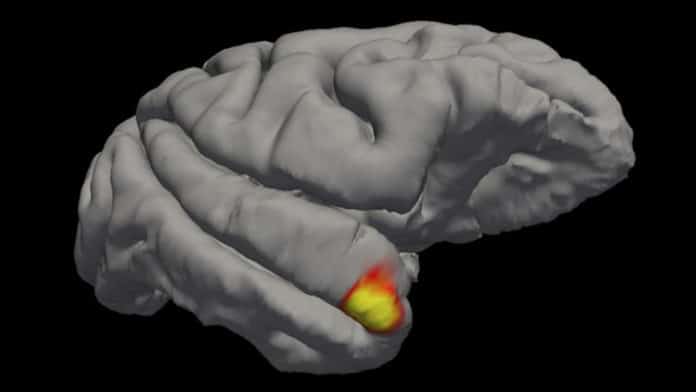How the brain recognizes the faces of familiar individuals has been important throughout the history of neuroscience. But the proposed cells that link visual processing to person memory are not found yet.
A new study reported the discovery of such cells in the brain’s temporal pole region that links face perception to long-term memory. Scientists from the Rockefeller University have a new class of memory cells that collectively remembers faces.
Scientists used fMRI as a guide to zoom in on the TP regions of two rhesus monkeys. They then recorded the electrical signals of TP neurons as the macaques watched images of familiar faces and unfamiliar faces that they had only seen virtually on a screen.
When subjects had seen familiar faces, their neurons in the TP region were highly selective. After processing the image, these neurons found to fast–discriminating between known and unknown faces.
Strangely, these cells responded threefold more strongly to familiar over unfamiliar faces despite the fact that the subjects had seen the unfamiliar many times on screens.
Neuroscientist Sofia Landi, first author on the paper, said, “This signifies the importance of knowing someone in person. Given the tendency nowadays to go virtual, it is important to note that faces that we have seen on a screen may not evoke the same neuronal activity as faces that we meet in person.”
Winrich Freiwald, professor of neurosciences and behavior at The Rockefeller University, said, “The cells of the TP region behave like sensory cells, with reliable and fast responses to visual stimuli. But they also act like memory cells that respond only to stimuli that the brain has seen before–in this case, familiar individuals–reflecting a change in the brain due to past encounters. They’re these very visual, very sensory cells–but like memory cells. We have discovered a connection between the sensory and memory domains.”
“The discovery of the TP region at the heart of facial recognition means that we can soon start investigating how those cells encode familiar faces. We can now ask how this region is connected to the other parts of the brain and what happens when a new face appears. And of course, we can begin exploring how it works in the human brain.”
“In the future, the findings may also have clinical implications for people suffering from prosopagnosia, or face blindness, a socially isolating condition that affects about one percent of the population. Face-blind people often suffer from depression. It can be debilitating because in the worst cases, they cannot even recognize close relatives.”
“This discovery could one day help us devise strategies to help them.”
Journal Reference:
- Sofia M. Landi et al. A fast link between face perception and memory in the temporal pole. DOI: 10.1126/science.abi6671
